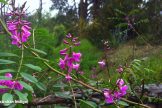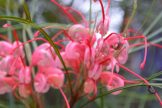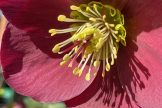
Most Australians have heard at one time or another, that our soils are almost universally phosphorus deficient. In a truly fascinating manner, Australian plants have evolved various ways of coping with low phosphorus levels: some develop symbiotic relationships with fungi, others have developed root structures which increase ability to find and absorb phosphorus. Somehow, this information, has segued into the incorrect idea that phosphorus is toxic to all Australian natives, and applying a phosphate fertiliser will kill native plants.
The reality is that while a few natives cannot tolerate phosphorus, many can benefit from the application of a complete fertiliser (one containing phosphorus). If your native is looking healthy it probably won’t benefit from an application of fertiliser, but if it is looking hungry, then it may respond well to an application of a balanced fertiliser. Natives generally prefer the slow release of fertiliser rather than a sudden large dose which may cause toxic shock.
It is important to note that the use of phosphorus is linked to the level of iron. If iron is deficient, then plants cannot metabolise the available phosphorus. Hence a balanced fertiliser is better, one that has Nitrogen, Phosphorus, Potassium and trace elements.
Equally important is being aware of those plants which ARE sensitive to phosphorus, where phosphorus is toxic and will kill the plant. Kevin Handreck wrote an excellent paper in 1997: ‘Phosphorus Needs of Some Australian Plants’ in the February edition of the journal of the Society for Growing Australian Plants. This paper gives you a list of which plants responded well to additional phosphorus and which reacted badly to additional phosphorus. It is interesting to note that different species within the same genus had wildly different reactions to phosphorus. So you can’t assume that because one Acacia tolerates phosphorus, they all will.
Consult Handreck’s lists, and if in doubt, just apply a small amount of balanced fertiliser and see how the plant reacts.





